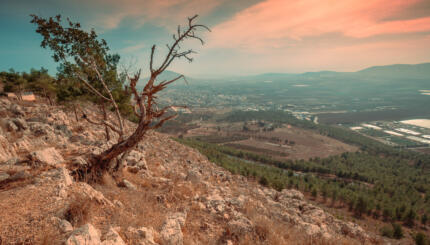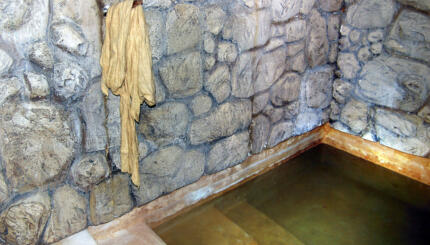Have you ever been abroad on Memorial Day? If so, have you even noticed that it was Memorial Day? Did you take time to recite the Pledge of Allegiance or sing America the Beautiful? My guess is no.
Yom Hazikaron, however, is different. Israel’s Memorial Day, which begins tonight, is a visceral, poignant, and deeply personal time for Israelis. Places of public entertainment are closed, school children dress in blue and white, and, perhaps most dramatically, a siren goes off throughout the country as the entire nation observes two minutes of silence and cessation of activity.
What is even more striking, though, is the continued resonance Yom Hazikaron holds for Israeli expats. It has become a time when Israelis in America flock to JCCs and other communal institutions for services and vigils. Even as enthusiasm for Yom Hazikaron is tepid, at best, for American Jews, Israeli expats go out of their way to populate–and often lead–communal gatherings. And this continued resonance is not surprising. After all, most Israelis are related to someone or otherwise know someone who has died fighting in defense of Israel. Israelis continue to serve in the Israeli Defense Forces via a mandatory draft after high school. And Israel continues to face existential threats from a chaotic Middle East that is far less stable today than it was at Israel’s founding in 1948.
I admit to being of two minds about the ongoing resonance of Yom Hazikaron for Israelis. On the one hand, I am saddened that the day continues to be so personal, so relatable, to so many Israelis. I yearn for a time that Israel will experience enough stability and erosion of hostility that it can treat its Memorial Day as we do ours here in America. I hope that Israel, soon, will be able to treat Yom Hazikaron in an historical rather than present-day context.
But I also think there is a deep lesson we, as American Jews, can draw from Yom Hazikaron. The force that makes Yom Hazikaron so powerful to Israelis is its existentialilty, its visceral nature. What if we were to begin to treat the Jewish holidays here in the same way? What if we were to teach and celebrate Hanukkah, Purim, and other core Jewish holidays not as (quasi-)historical remnants of our tradition but as living, breathing embodiments of our present-day Jewish identity? We could treat Hanukkah as a time to grapple with the challenges we currently face between assimilation and Jewish particularism; Purim as a time to assess both the fragility of Jewish life in anti-Semitic locations and the degree of zealousness with which we should or shouldn’t combat our foes. And on and on. This is the challenge we just addressed over Passover, when our Haggadot implore us to experience the exodus as if we personally were there. But it is so much more than that. It is the challenge for all of us who care about Judaism’s future in America–to create a living, breathing Judaism that makes our traditions and heritage come to life. A Judaism that, wherever we might find ourselves geographically located, will compel us to come together in worship and fellowship.
Hanukkah
Pronounced: KHAH-nuh-kah, also ha-new-KAH, an eight-day festival commemorating the Maccabees' victory over the Greeks and subsequent rededication of the temple. Falls in the Hebrew month of Kislev, which usually corresponds with December.
Purim
Pronounced: PUR-im, the Feast of Lots, Origin: Hebrew, a joyous holiday that recounts the saving of the Jews from a threatened massacre during the Persian period.



